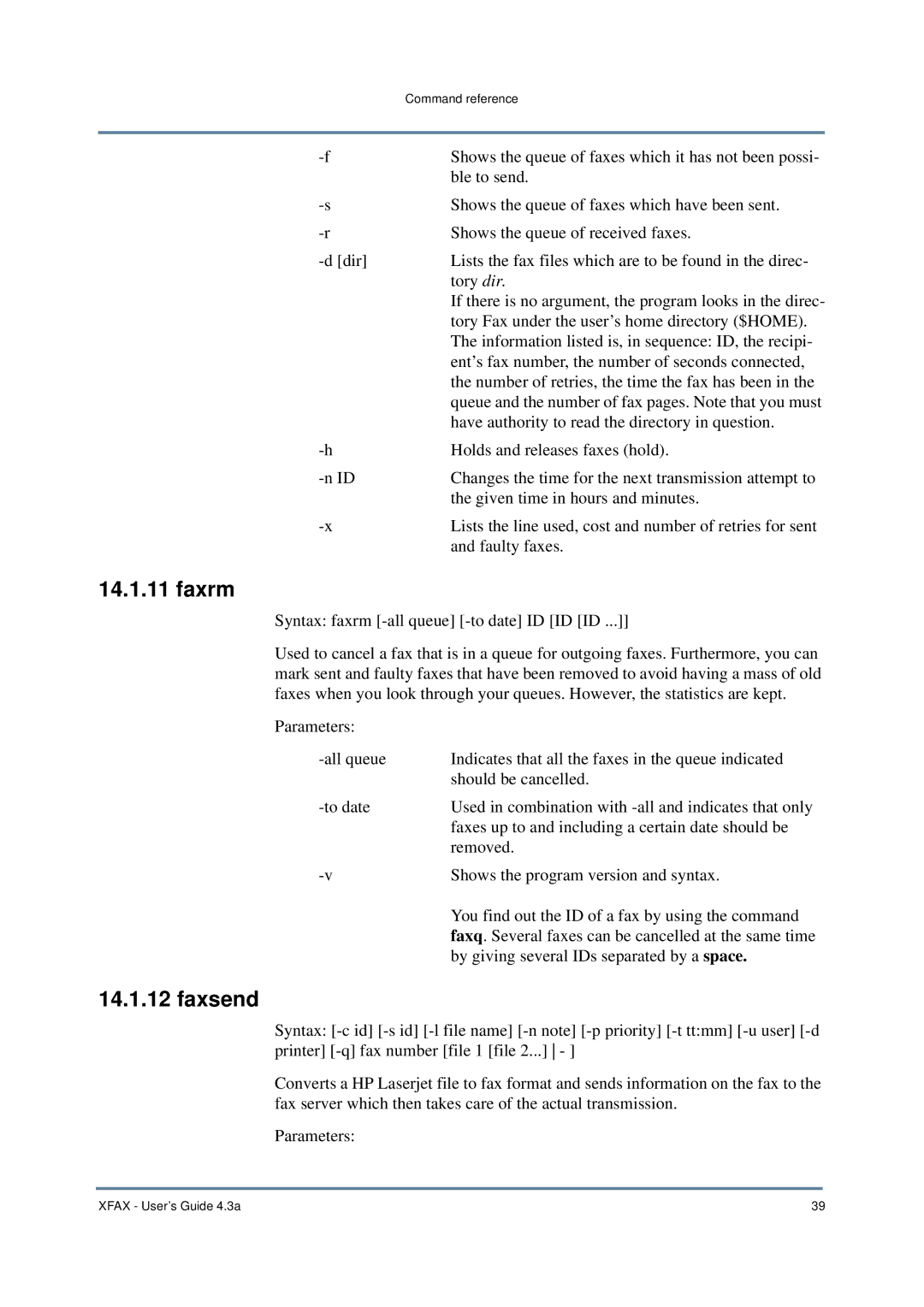
| Command reference |
Shows the queue of faxes which it has not been possi- | |
| ble to send. |
Shows the queue of faxes which have been sent. | |
Shows the queue of received faxes. | |
Lists the fax files which are to be found in the direc- | |
| tory dir. |
| If there is no argument, the program looks in the direc- |
| tory Fax under the user’s home directory ($HOME). |
| The information listed is, in sequence: ID, the recipi- |
| ent’s fax number, the number of seconds connected, |
| the number of retries, the time the fax has been in the |
| queue and the number of fax pages. Note that you must |
| have authority to read the directory in question. |
Holds and releases faxes (hold). | |
Changes the time for the next transmission attempt to | |
| the given time in hours and minutes. |
Lists the line used, cost and number of retries for sent | |
| and faulty faxes. |
14.1.11 faxrm
Syntax: faxrm
Used to cancel a fax that is in a queue for outgoing faxes. Furthermore, you can mark sent and faulty faxes that have been removed to avoid having a mass of old faxes when you look through your queues. However, the statistics are kept.
Parameters: |
|
Indicates that all the faxes in the queue indicated | |
| should be cancelled. |
Used in combination with | |
| faxes up to and including a certain date should be |
| removed. |
Shows the program version and syntax. | |
| You find out the ID of a fax by using the command |
| faxq. Several faxes can be cancelled at the same time |
| by giving several IDs separated by a space. |
14.1.12 faxsend
Syntax:
Converts a HP Laserjet file to fax format and sends information on the fax to the fax server which then takes care of the actual transmission.
Parameters:
XFAX - User’s Guide 4.3a | 39 |
